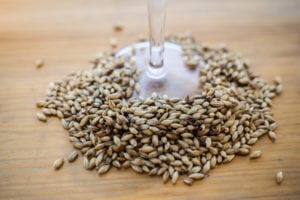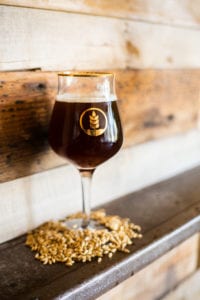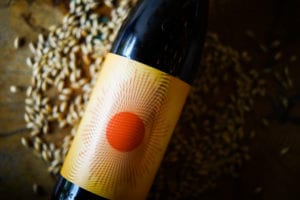Barleywine: Big in Strength, Bold in Complexity
Barleywine: Big in Strength, Bold in Complexity
Posted by Winslow Sawyer
4 years ago | July 7, 2021
Estimated Reading Time: 2 minutes, 47 seconds
Barleywine is the original heavy hitter, characterized by its full body and high strength, usually between 8% and 12% ABV. Before imperial IPAs and stouts took over the American craft beer scene, the vast majority of brews fell in the 4 to 5% ABV range, making barleywine a unique commodity for many years (read: centuries).
AN ALE WITH A TALE
 The tale of barleywine begins in 18th century England. To make the most of their ingredients, brewers in that day and age would use the parti-gyle method for their beers. This means they would use massive amounts of malt and hops to create two or three separate styles of beer from a single grain mash. The first runs of wort were used for stronger ales and the subsequent runs were used for milder ales. The milder beer needed to be consumed quickly before it spoiled. The initial brew, which had the highest level of alcohol, would rest in wooden barrels where it developed unique and rich characteristics from the aging process, much like wine. These aged brews were variously called old ales, stock ales, and strong ales.
The tale of barleywine begins in 18th century England. To make the most of their ingredients, brewers in that day and age would use the parti-gyle method for their beers. This means they would use massive amounts of malt and hops to create two or three separate styles of beer from a single grain mash. The first runs of wort were used for stronger ales and the subsequent runs were used for milder ales. The milder beer needed to be consumed quickly before it spoiled. The initial brew, which had the highest level of alcohol, would rest in wooden barrels where it developed unique and rich characteristics from the aging process, much like wine. These aged brews were variously called old ales, stock ales, and strong ales.
When barleywine was first produced, it was enjoyed mainly by the wealthy aristocrats of England as it was too expensive to produce on a commercial scale. The seminal 1736 book, The London and Country Brewer, mentions very strong ales brewed “to answer the like purpose of wine” at the table. This was especially meaningful in the days when difficulties between England and the wine-producing countries to the south could interrupt wine supplies for extended periods of time.
It wasn’t until the brewers Bass, Ratcliff, & Gretton (the forebearer of Bass Brewery) began production of a single-brew barleywine, No. 1, in 1854 that the style became known as barleywine. Bass No. 1, as it is still known, was brewed almost continuously until 1995. Other brewers followed suit and today several UK breweries carry on the tradition.
While barleywine’s roots are deeply steeped in English tradition, it saw a substantial second resurgence among American craft brewers, starting with Anchor Brewing’s Old Foghorn in 1975, and followed by Sierra Nevada Brewing’s Bigfoot in 1983.
AN ENGLISH TRADITION & AN AMERICAN TWIST
 While English and American barleywines are both designed to showcase the depth of malt complexity and thus share many similarities in their flavor profiles, the differences are also great enough that organizations such as the Brewers Association and the Beer Judge Certification Program (BJCP) have assigned individual style profiles for the two versions, as well as for their progenitor, old ale.
While English and American barleywines are both designed to showcase the depth of malt complexity and thus share many similarities in their flavor profiles, the differences are also great enough that organizations such as the Brewers Association and the Beer Judge Certification Program (BJCP) have assigned individual style profiles for the two versions, as well as for their progenitor, old ale.
English barleywine places less emphasis on hop character than the American barleywine and features English hops, which make a subtler impression than American hops. English barleywine can be darker, maltier, fruitier, and feature richer specialty malt flavors than American barleywines.
Then there’s American barleywine, which is similar in malt intensity to its English cousin, but has a greater emphasis on hop bitterness, flavor and aroma; it often features American hop varieties.
FORGOTTEN BRILLIANCE
 Forgotten Brilliance is our first-ever barleywine; it’s a tribute to both the big, hoppy American barleywines as well as vintage English barleywines of yore. Featuring classic American hops Centennial, Amarillo, and Cascade Cryo, this ale will initially be very hop forward. As time goes on the delicate hop compounds will change and dissipate, leaving an almost completely different beer a year from now, and an even different one two decades from now. But fear not, its hearty backbone of Maris Otter and English crystal malts is designed to support the developing hop compounds over time.
Forgotten Brilliance is our first-ever barleywine; it’s a tribute to both the big, hoppy American barleywines as well as vintage English barleywines of yore. Featuring classic American hops Centennial, Amarillo, and Cascade Cryo, this ale will initially be very hop forward. As time goes on the delicate hop compounds will change and dissipate, leaving an almost completely different beer a year from now, and an even different one two decades from now. But fear not, its hearty backbone of Maris Otter and English crystal malts is designed to support the developing hop compounds over time.
This beauty is ready to be enjoyed now, but you might want to pick up another bottle (or two) to open in years to come and see for yourself how gracefully it ages. Whenever you decide to enjoy your bottle of Forgotten Brilliance, be sure to raise your glass to the old English traditions that inspired this unique and deliciously complex creation.





